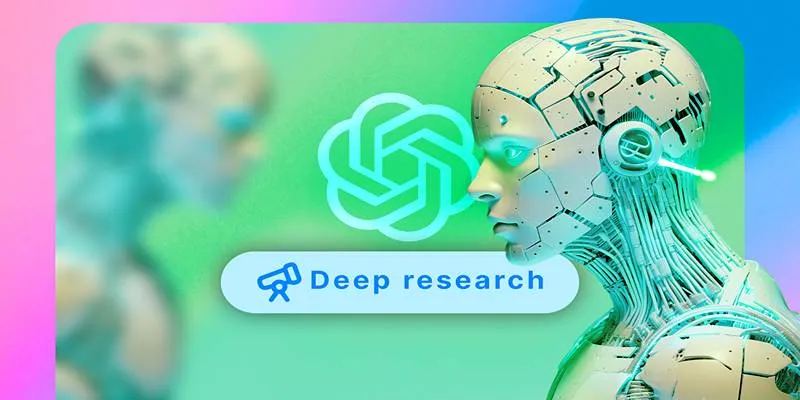Machine learning used to be a complex field reserved for those with programming skills and extensive mathematical knowledge. However, with the advent of AutoML, anyone with a dataset and a clear question can now create models without writing a single line of code. These tools take care of the technical aspects—such as cleaning data, selecting algorithms, and tuning settings—allowing you to focus on achieving meaningful outcomes.
It’s important to note that AutoML isn’t about replacing experts; it’s about democratizing access to machine learning, enabling more people to utilize these advanced tools in their everyday work. Whether you’re in business, research, or education, AutoML puts powerful capabilities in your hands without the complexity.
What is AutoML and How Does It Work?
AutoML automates the steps in the machine learning process, like data preprocessing, feature engineering, model selection, and hyperparameter tuning. Traditionally, each of these tasks required significant expertise and manual input. AutoML simplifies this by handling these tasks automatically. Users just need to provide data and define the desired outcome, and the system takes over.
These platforms test a wide range of algorithms, evaluate performance, and adjust settings to find the optimal model. Many include built-in charts and summaries to help users understand the results. The aim isn’t to cut corners but to make machine learning accessible to non-experts.
Popular platforms like Google Cloud AutoML, Microsoft Azure ML, Amazon SageMaker Autopilot, and open-source solutions such as Auto-sklearn and H2O.ai cover a wide range of use cases, from classification to forecasting. Once a model is trained, deployment is typically just a few clicks away, ready to be embedded into applications or dashboards.
Unlike other low-code solutions, AutoML actively works through numerous machine-learning approaches behind the scenes, executing and comparing multiple models to select the best one. This technical effort occurs out of sight, allowing users to focus on decision-making rather than coding.
The Value of No-Code Machine Learning
The most significant impact of no-code machine learning is accessibility. Teams without data scientists can still apply machine learning to real-world problems. This means marketers can identify trends, healthcare workers can pinpoint risk factors, and operations teams can forecast demand—all through a visual interface.

For small companies or startups, AutoML levels the playing field. They can experiment with models and apply data-driven insights without requiring a large technical team, turning machine learning into a practical tool rather than a distant goal.
Speed is another advantage. What once took weeks can now be accomplished in hours. Users can build, evaluate, and deploy models quickly, often with just a few steps. This flexibility makes it easier to adapt to changing needs or refine models as new data becomes available.
AutoML also fosters collaboration. For instance, a product manager can explore data trends independently without needing a developer to run scripts. This leads to faster experimentation, more ownership of results, and more informed decisions across the board.
Limitations and Considerations of AutoML
While AutoML offers numerous benefits, it’s not without its challenges. Data quality is a primary concern. If the input data is inaccurate or biased, the model will be too. Many AutoML tools include basic data cleaning steps, but they can’t replace thoughtful data preparation. Users must check for missing values, understand the features, and ensure the data aligns with the problem being addressed.
Customization is another limitation. AutoML tools often choose general approaches that work well across many situations, but they may not meet domain-specific needs. A human expert might identify patterns or tweak settings in ways that AutoML can’t. If precise control is necessary, these platforms may feel restrictive.
Understanding is also a concern. It’s easy to rely on AutoML outputs without understanding how or why they work. In fields like finance or healthcare, this can be risky. Many platforms offer tools to explain models, such as feature importance scores, but these still require interpretation. Without understanding what the model does, users might misinterpret the results or apply them incorrectly.
Cost is another factor. Cloud-based AutoML services typically charge based on usage, which can escalate quickly with large datasets. Open-source alternatives might be free but could require more setup, even if the interface remains code-free.
Despite these issues, AutoML’s benefits often outweigh the drawbacks for many users. It’s not about replacing experts; it’s about making machine learning more accessible and reducing the time from idea to testing.
The Future of Machine Learning with AutoML
AutoML is transitioning machine learning from a specialist field to a practical tool for more people. As more industries work with data, the demand for simple and effective tools will continue to grow. AutoML addresses this need by removing complexity and providing a way to build models that fit into everyday tasks.

The next steps for these tools include greater usability and flexibility. Future platforms will likely offer clearer explanations, smoother integration with existing systems, and more options for customizing models for specific use cases. Some may combine no-code and pro-code options, allowing technical users to refine models while keeping the interface simple for others.
Responsible use is becoming increasingly important. AutoML systems will need to help users identify bias, safeguard privacy, and understand their models’ limitations. This is especially crucial in areas where decisions impact people’s lives. Making tools easier to use shouldn’t mean skipping the thought process that ensures machine learning is safe and fair.
As more people gain access to machine learning, the focus will shift from building models to applying them effectively. AutoML supports this by enabling faster, more informed experimentation and encouraging broader participation in data-driven work.
Conclusion
AutoML empowers individuals without coding skills to build and use machine learning models by automating complex steps. It opens access to AI tools for professionals across various fields, making data-driven work more practical and efficient. While there are some limitations, such as reduced flexibility and the need for clean data, these tools are continually improving. With thoughtful use, AutoML can support better decision-making and help more people solve problems using data without needing deep technical knowledge.
 zfn9
zfn9





















